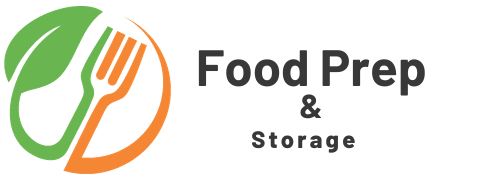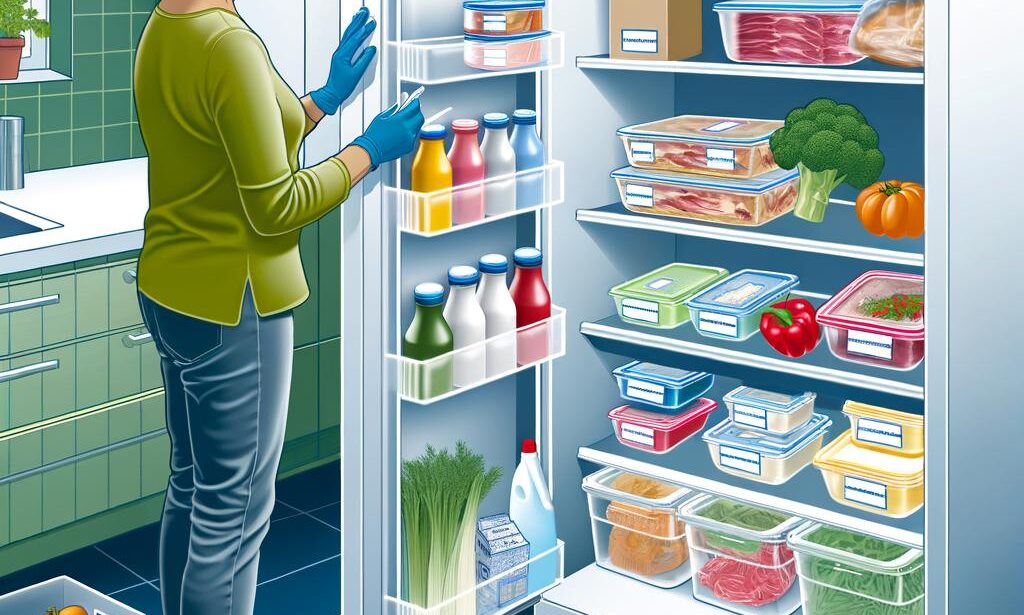In the quest for maintaining a healthy lifestyle, the importance of safe food storage cannot be overstated. It serves as a critical line of defense against the proliferation of pathogens and the risk of foodborne illnesses. This article delves into the best practices for preventing contamination through proper food storage techniques. From understanding the science behind spoilage to implementing effective strategies in your own kitchen, we will explore the methods that can help ensure the food you consume remains safe, nutritious, and enjoyable. Whether you are a culinary enthusiast, a professional in the food service industry, or simply someone who seeks to safeguard your family’s well-being, this guide will provide you with the essential knowledge to minimize risks and promote a culture of food safety.
Table of Contents
- Understanding Food Contamination and Its Risks
- Proper Temperature Control for Safe Food Storage
- Best Practices for Storing Raw and Cooked Foods
- Preventing Cross-Contamination in the Kitchen
- Safe Food Storage: Tips for Refrigeration and Freezing
- Q&A
- Final Thoughts

Understanding Food Contamination and Its Risks
Food contamination can occur at any stage of the food production process, from the farm to the table. It is important to understand the risks associated with food contamination and take steps to prevent it, especially when it comes to safe food storage. By understanding the causes of food contamination and implementing proper storage practices, you can reduce the risk of consuming contaminated food.
There are several common causes of food contamination, including:
- Poor hygiene and sanitation practices
- Cross-contamination from raw to cooked foods
- Improper storage temperatures
- Use of contaminated water or ingredients
When it comes to safe food storage, it is important to follow these guidelines to prevent contamination:
- Store raw meats and seafood on the bottom shelf of the refrigerator to prevent juices from dripping onto other foods
- Keep the refrigerator temperature at 40°F or below to slow the growth of bacteria
- Use airtight containers to store leftovers and prevent cross-contamination
- Regularly clean and sanitize the refrigerator and pantry to prevent the growth of mold and bacteria

Proper Temperature Control for Safe Food Storage
Proper temperature control is essential for safe food storage to prevent contamination and ensure the quality and safety of the food we consume. It is important to understand the recommended temperature ranges for different types of food to minimize the risk of bacterial growth and foodborne illnesses.
Here are some key points to consider for proper temperature control in food storage:
- Refrigerator temperature should be set at 40°F (4°C) or below to slow the growth of bacteria.
- Freezer temperature should be at 0°F (-18°C) or lower to maintain the quality of frozen foods.
- Hot foods should be kept at a temperature of 140°F (60°C) or above to prevent bacterial growth.
By following these temperature guidelines and regularly monitoring the temperature of your storage units, you can help prevent food contamination and ensure the safety of the food you consume.

Best Practices for Storing Raw and Cooked Foods
When it comes to storing raw and cooked foods, it’s important to follow best practices to prevent contamination and ensure the safety of the food you consume. Proper food storage not only helps to maintain the quality and freshness of the food but also reduces the risk of foodborne illnesses. Here are some tips to help you store raw and cooked foods safely:
- Store raw meats, poultry, and seafood in the coldest part of the refrigerator, preferably on the bottom shelf to prevent juices from dripping onto other foods.
- Keep cooked foods separate from raw foods to avoid cross-contamination. Use separate containers and utensils for raw and cooked foods.
- Label and date all food containers to keep track of when the food was prepared and to ensure that it is consumed within a safe timeframe.
Proper food storage is essential for maintaining the quality and safety of the food you consume. By following these best practices, you can prevent contamination and reduce the risk of foodborne illnesses. Remember to always follow food safety guidelines and use common sense when storing raw and cooked foods.
Preventing Cross-Contamination in the Kitchen
When it comes to safe food storage, preventing cross-contamination is crucial. Cross-contamination occurs when harmful bacteria are transferred from one surface to another, leading to foodborne illnesses. To ensure the safety of your food and your family, it’s important to take the necessary steps to prevent cross-contamination in the kitchen.
One of the most effective ways to prevent cross-contamination is by following proper food storage practices. This includes storing raw meat, poultry, and seafood in separate containers or on the bottom shelf of the refrigerator to prevent their juices from dripping onto other foods. Additionally, using color-coded cutting boards and utensils for different types of food can help minimize the risk of cross-contamination. It’s also important to regularly clean and sanitize kitchen surfaces, utensils, and equipment to eliminate any potential sources of contamination.

Safe Food Storage: Tips for Refrigeration and Freezing
When it comes to safe food storage, proper refrigeration and freezing are essential to preventing contamination and ensuring the longevity of your food. By following these tips, you can maintain the quality and safety of your food items.
Refrigeration Tips:
- Keep the refrigerator temperature at or below 40°F (4°C) to slow the growth of bacteria.
- Store raw meat, poultry, and seafood in sealed containers or on a plate on the bottom shelf to prevent cross-contamination with other foods.
- Use a refrigerator thermometer to monitor the temperature and make sure it stays within the safe range.
Freezing Tips:
- Package foods in airtight, moisture-proof containers or freezer bags to prevent freezer burn and maintain quality.
- Label and date items before placing them in the freezer to keep track of storage times and prevent food waste.
- Rotate older items to the front of the freezer to ensure they are used before newer additions.
Q&A
Q: Why is safe food storage important?
A: Safe food storage is important to prevent contamination and the spread of foodborne illnesses.
Q: What are some common causes of food contamination?
A: Common causes of food contamination include improper storage temperatures, cross-contamination from raw foods, and inadequate cleaning and sanitizing of food storage areas.
Q: How can I prevent food contamination in my kitchen?
A: To prevent food contamination, it is important to store food at the proper temperatures, keep raw and cooked foods separate, and regularly clean and sanitize food storage areas.
Q: What are the recommended storage temperatures for different types of food?
A: The recommended storage temperatures for different types of food vary, but generally, refrigerated foods should be kept at 40°F or below, and frozen foods should be kept at 0°F or below.
Q: How can I avoid cross-contamination in my kitchen?
A: To avoid cross-contamination, it is important to use separate cutting boards and utensils for raw and cooked foods, and to clean and sanitize surfaces and utensils after they come into contact with raw foods.
Q: What are some best practices for cleaning and sanitizing food storage areas?
A: Best practices for cleaning and sanitizing food storage areas include using hot, soapy water to clean surfaces, and using a sanitizing solution or bleach solution to disinfect surfaces.
Q: How can I tell if food has been contaminated?
A: Signs of food contamination include unusual odors, discoloration, or sliminess, as well as mold growth or the presence of pests.
Q: What should I do if I suspect that food has been contaminated?
A: If you suspect that food has been contaminated, it is best to discard it to prevent the risk of foodborne illness.
Final Thoughts
In conclusion, safe food storage is essential in preventing contamination and ensuring the health and safety of consumers. By following proper storage guidelines and implementing good hygiene practices, the risk of foodborne illnesses can be significantly reduced. It is important to be mindful of the potential sources of contamination and take proactive measures to protect the integrity of our food supply. By staying informed and practicing safe food storage, we can all contribute to a healthier and safer food environment for everyone. Thank you for reading and stay safe!

